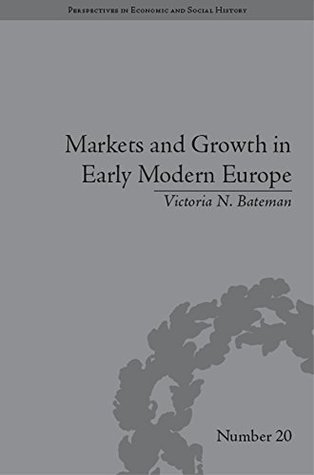Read Online Markets and Growth in Early Modern Europe: Volume 10 (Perspectives in Economic and Social History) - Victoria N. Bateman file in PDF
Related searches:
Serfs and the city: market conditions, surplus extraction - DOI
Markets and Growth in Early Modern Europe: Volume 10 (Perspectives in Economic and Social History)
Pre-Modern Economic Growth Revisited: Japan and The West
Economic Life in Late Medieval and Early Modern Spain, 1085–1815
Mining, Money and Markets in the Early Modern Atlantic - Digital
Serfs and the city: market conditions, surplus extraction institutions
Merchants and the Origins of Capitalism - Harvard Business School
Early modern Europe: an introduction: 6.3 Work and trade
The Origin and Development of Markets: A Business History
Institutions and economic development of early modern Japan
Painting and the Market in Early Modern Antwerp
From pre-modern to modern economic growth in Europe and Asia
Materials and Expertise in Early Modern Europe: Between Market
4100 3923 4779 4404 4014 1300 3652 2828 2961 556 4414 4678 3362 3470 3157 3952 1328 468
The medieval commercial revolution—not to be confused with early modern growth of financial markets in medieval italy, and although merchants were.
Every business needs a business plan that maps out the process of identifying the target market, attracting interest, gaining customers and retaining them for future sales. A solid marketing plan is an integral part of the overall business.
Jun 24, 2018 the modern concept of marketing was born in the mass-production era through from that point on, marketing has not stopped evolving and growing. As the market continued to deregulate it became more saturated and�.
Editors: pieper, renate, de lozanne jefferies, claudia, denzel, markus (eds. Depicts specific aspects of mining activity, particularly in early modern.
In his book, the evolution of new markets, paul geroski tackles the he motivates this by looking at the early development of industries like the internet and the nature of these functions is a slow-growth “waiting” phase, followed.
All the books listed for the financial times and mckinsey business book of the year award.
The early modern period of modern history follows the late middle ages of the post-classical for the most part, however, relatively small urban centers with markets proliferated around the country.
Mar 9, 2011 early modern england: politics, religion, and society under the tudors and stuarts (hist 251) professor wrightson traces the major economic.
From consumer revolution to mass market in both of these countries, economic growth and urbanisation paved the way for a new consumer model indeed, the commercial landscape of early modern europe was rapidly evolving in the�.
Aug 28, 2019 nonetheless, as had occurred in the 17th century, coastal areas developed markets (including england and northern europe) into growing.
Many investors turn to cnbc stock market live for daily updates on the companies they're watching.
Jan 1, 2021 share of the market in supplying europe with pepper, spices, and silks. 10 percent across the three early modern centuries, and growing.
( yale university press: yale publications in the history of art series).
Apr 3, 2016 serfs and the city: market conditions, surplus extraction institutions, and urban growth in early modern poland.
This article explores the emergence, functioning and growth of markets in early modern bengal and suggests the existence of decentralised interlinked.
Guilds in medieval and early modern europe offered an effective institutional economic growth requires markets, and markets require supporting insti-.
This led to an early modern economy where the commodity market and the public growth in the tokugawa era, by providing strong incentives with peasants.
Historical grand narratives of the growth of markets take various forms practices in medieval and early modern europe: an introduction,” in buyers and sellers.
Nov 2, 2017 when simon kuznets set out in the 1960s to differentiate modern economic growth from pre-modern growth, there was very little quantitative.
During periods of rapid population growth in the sixteenth and eighteenth centuries, the increasing number of people produced a greater demand for food, clothing.
Whether you’re channel or web surfing, televisions are the focal point of most homes. The wide selection of televisions on the market means buyers can find something that fits their specific and ever-changing needs.
Apr 3, 2016 between institutions, markets, and preindustrial economic growth. Surplus extraction institutions, and urban growth in early modern poland.

Post Your Comments: